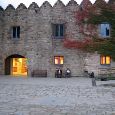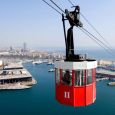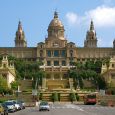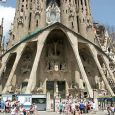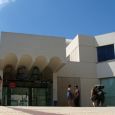Barcelona
Advertisement
By Air
Barcelona’s International Airport is the second biggest Airport in Spain. Its passenger traffic reached almost thirty three million passengers passing through its doors in 2007 and 352,489 flights were handled. Language in Barcelona serves many destinations including all points along the Costa Brava. Barcelona’s international airport is located just 13 KM South West of the city centre. It has 3 terminals: Terminal A (for foreign airline departures and international arrivals), terminal B (for Spanish airline departures and European Union arrivals) and terminal C (for Air Shuttle flights and General Aviation). Currently a fourth terminal is under construction and has to come into service in 2009.
By Train
The rail service in Barcelona is predominantly useful for commuters and residents who live further out of the city. There are frequent local and regional services that arrive on the central line that traverses the city from North to South stopping at Estacio Sants, just west of La Ramblas, Catalunya Station on Placa de Catalunya, and Estacio Franc Station east of La Ramblas.
By Bus
Barcelona bus routes are easiest to find out by picking up one of the many free city maps from the tourist information booths. These usually have all the colour coded routes marked. Buses operate every day between 05:00 and 22:30, but some lines finish earlier or run later. There are also night buses on some routes that run between 10:00 and 04:00. Buses are useful for reaching the areas that the Metro doesn’t, such as Mont Juïc (site of the Olympic complex) and Parc Guëll. There is also a tourist ‘hop on, hop off’ bus
By Metro
The Barcelona Metro is the quickest and easiest way to get about and it has five different lines with the entrances to these clearly marked with a red diamond sign. There are several points along Las Ramblas as well as at Jaume which make the tourist areas accessible, however visitors to Mont Juïc and the Olympic park will need to get out at Espanya and walk up the hill or take a cable car. For multi journeys purchase a T10 ticket which is good for 10 rides of any combination on city transport (within a 100 minute period) and can also be used on the airport rail service but not the Aerobus. Placa Catalunya is considered the centre of the city and the metro here links up with the main rail station. Open: Monday to Thursday; 05:00 to 23:00, Friday and Saturday; 05:00 to 02:00, Sunday; 06:00 to midnight.
Maritime Museum
Near the port, west of the Columbus Monument are the striking vaulted buildings with many bays, the form of which clearly betrays their original function. Situated in the docks (Catalan: "Drassanes"), they were once a naval arsenal for the royal fleet. Here has been established the Museu Marítim which at present is undergoing reorganization. Therefore the description may not be entirely accurate. Some of the rooms are reserved for special exhibitions.
The museum, which is constantly being extended, portrays all aspects of the sea and seafaring by means of ships, models of ships, nautical equipment, tools and weapons, diagrams and drawings. Signs guide the visitor on a circular tour.
Harbor Cable Car
Spanning the harbor basin diagonally is the harbor cable car (in Catalan "Transbordador Aerí"). The harbor terminus is the Torre de Sant Sebastian on the new mole, a 96m/315ft steel lattice mast (the Plaça del Mar with sports and cultural facilities is planned); the intermediate station is the 158m/519ft Torre de Jaume I on the Moll de Barcelona. The funicular ends on the northeast side of Montjuïc, near the Jardins Mossen Costa i Llobera (cactus garden). During the journey passengers can enjoy a splendid view of the port area and the wide Passeig de Colom.
National Palace
Some distance from the Plaça d'Espanya, above the Exhibition Grounds, at the top of a wide flight of steps, stands the giant domed and architecturally somewhat overornate Palau Nacional, which has been the home of the Museum of Catalan Art since 1934. The palace, originally built for the World Exhibition of 1929, has been revamped by the Italian architect Gae Aulenti.
Sagrat Cor View
Steps lead to the ambulatory round the foot of the giant statue of Christ, which can be seen from miles away. From here there is a superb view of Barcelona and the sea, over the chain of mountains which includes Tibidabo and the wooded hills of the interior. To the south stands a TV mast for transmitting the Olympic Games, and to the north the transmitters of Radio Barcelona and Catalunya Radio.
Sagrada Familia
Sagrada Familia or the Giant Temple is another masterpiece designed by Antonio Gaudi that has been under construction since 1882. The stones used in building the temple are of rare beauty. Some permanent and temporal exhibitions are also set up inside the Sagrada Familia.
Fundació de Joan Miró
Another famous art gallery of Barcelona, the Fundació de Joan Miró displays his artwork collection as well as a beautiful set of sculptures and tapestries as well.
Information not available


